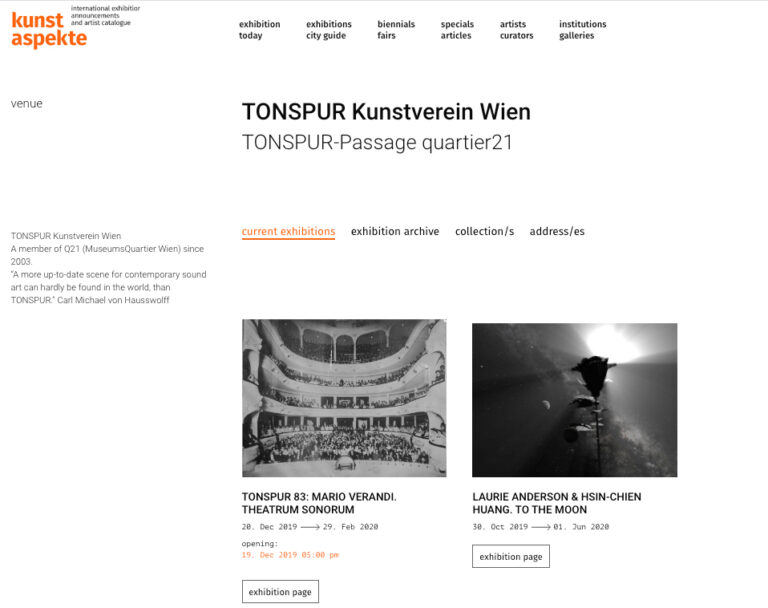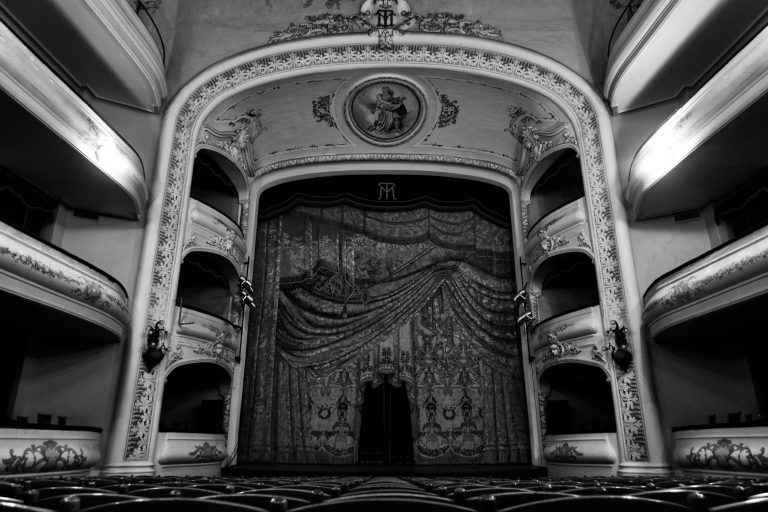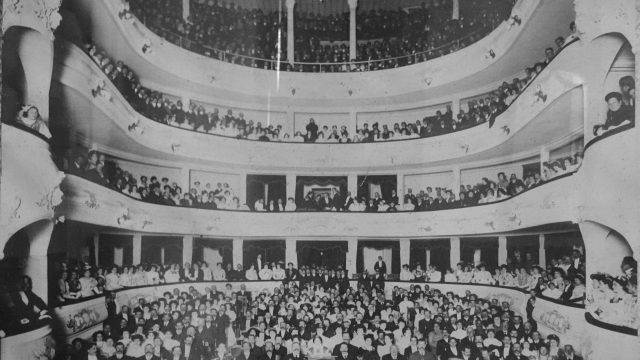
Theatrum Sonorum
8-channel sound installation and 7-part series of images
concept, recordings and composition: Mario Verandi
photos: Germán Aranda
musicians: Dina Bolschakova (cello), Lucia Yanzón (violin)
installation set-up: Peter Szely
production: Tonspur Kunstverein Wien
a project by Georg Weckwerth and Peter Szely for TONSPUR
Tonspur Passage, Museumsquartier, Vienna, 20.12.2019 – 29.02.2020
(for the radio production version click here)
“… You know, an empty theatre produces a spooky feeling in me. It is as if all the objects and machinery suddenly come alive. And the voices of all the actors and opera singers that once performed in the theatre start whispering from the boxes and stalls …”
(freely adapted from the play “Six Characters in Search of an Author” by Luigi Pirandello, 1924)
This work is based on sound recordings made at the Teatro Municipal de San Nicolás in Argentina. This Italian-style theatre was inaugurated in 1908 and is one of the most beautiful theatres in Argentina today. The furnishings (seats, mirrors, curtains etc.) were imported from the company Gebrüder Thonet in Vienna. The stairs were built using Carrara marble from Italy. Rafael Barone, a renowned Italian artist who arrived in Buenos Aires around 1883, painted the ceiling frescoes. The opening Gala took place on the 10th August 1908 with the performance of Giacomo Puccini’s opera “Manon Lescaut” by the Compania Lirica Italiana Di Bernabei. My grand-grandfather, an Italian immigrant who worked on the construction of the theatre, was later appointed caretaker. An apartment was built inside the theatre for him and his family. Since then, four generations of my family have lived and worked in this theatre. The theatre still retains some of the stage machinery and objects from the old days that have not since been replaced. Some examples are the rope that raises and lowers the front curtain, some of the seats and doors, a metal spiral staircase as well as machines for producing wind and lighting effects. The piece also includes musical fragments from “Manon Lescaut”, recorded in collaboration with the musicians.
 |
 |
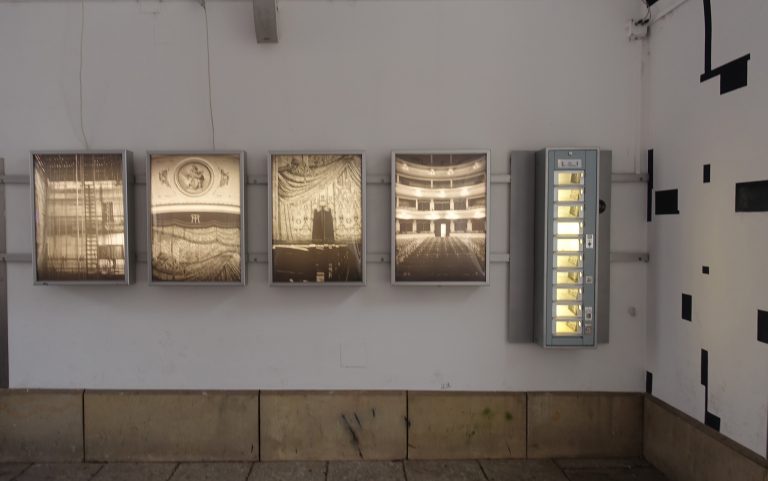 |
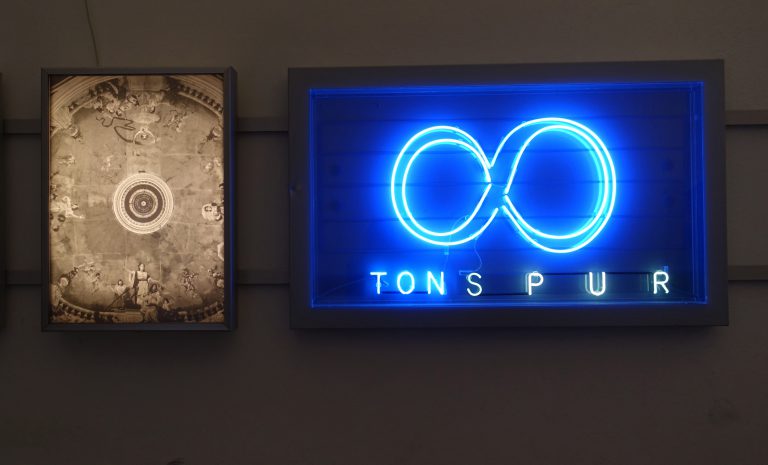 |
 |
 |
| Unveiling the Theatrum Sonorum for TONSPUR by Josseline Black “My kingdom for a more embodied body” Mario Verandi investigates poetic metaphors through the simultaneous expression of sonic autobiographies and compositions which place a listener in a timeless environment.The notion of metaphor has long been considered a hindrance to realism. In light of this assumption, it is important to unpack the ways in which metaphor can be used to bring one closer to the imminent factuality behind forms. The use of field recording in Verandi’s work is a testament to the potential for sound not only to draw one into the detail of nature and apparent identity but also the potential for capturing distinct moments in time. Field recording is a metaphor, in this sense for memory itself, which functions as a sequence of snapshots, which often decontextualise and recompose themselves durationally. -Josseline Black, anthropologist and artist, Vienna , 2019- |
